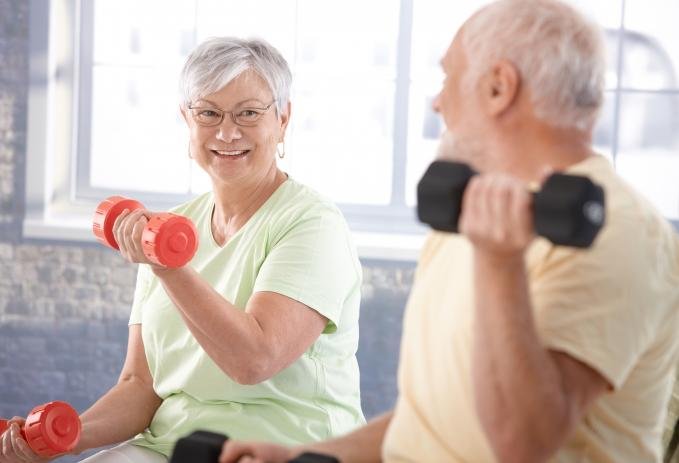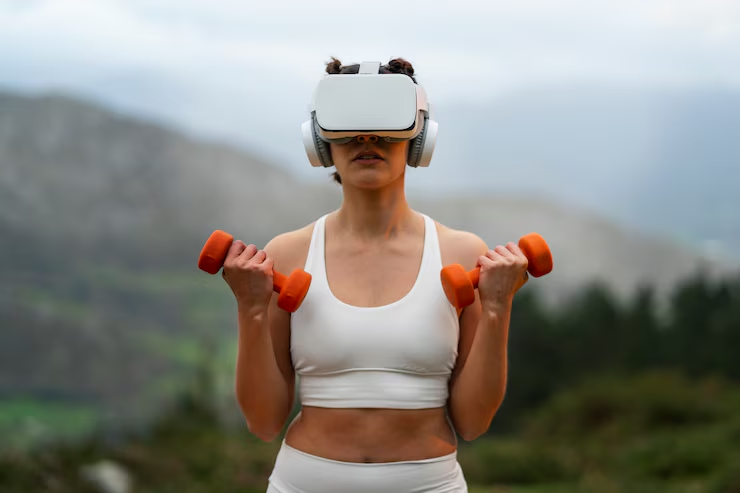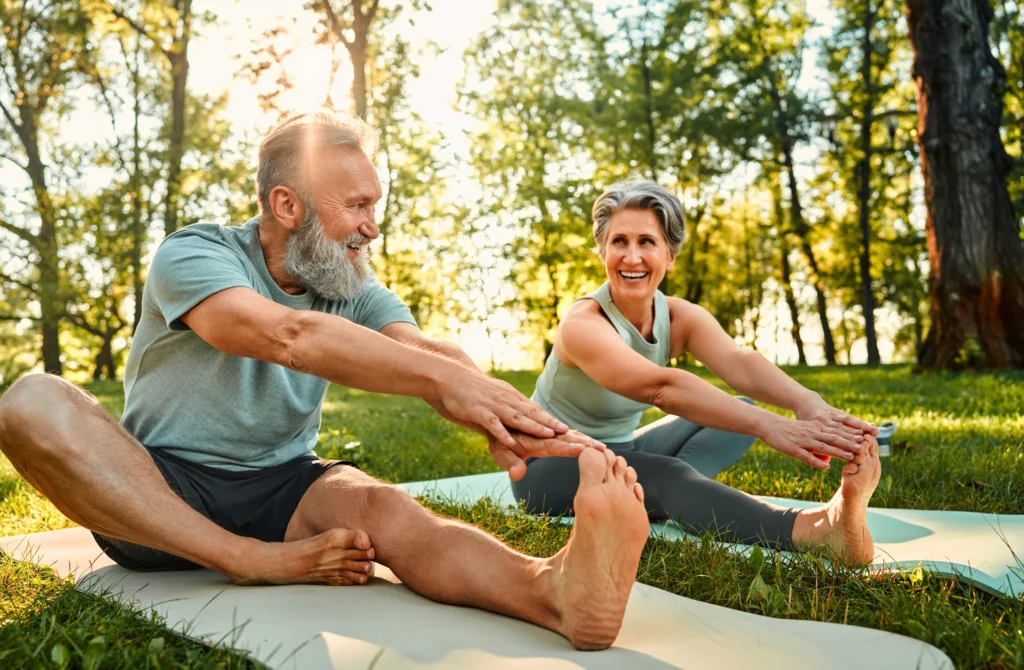Imagine strolling through a park with your grandkids, lifting groceries with ease, or dancing at a family gathering without missing a beat. For older adults, exercise isn’t just about staying fit—it’s about embracing life with energy and independence. As we age, staying active becomes a powerful tool to boost health, lift mood, and maintain freedom. With searches for “senior exercise benefits” climbing by 280% in recent years, more people are realizing that movement is key to thriving past 65. In this article, we’ll explore why exercise is so valuable for older adults, its life-changing benefits, and how to start safely. Let’s dive in and discover how staying active can transform your golden years!

Why Exercise Is Essential for Older Adults
Aging brings changes like weaker muscles, stiffer joints, and lower energy, but exercise can slow these down, helping you stay strong and independent. It’s not about intense workouts; simple activities like walking, stretching, or gardening can work wonders. The National Institute on Aging says regular exercise can add years to your life and improve your quality of life.
With “exercise for seniors” a top Google search, older adults are eager to stay active. From better heart health to sharper minds, exercise offers benefits that keep you thriving. Let’s break down the top reasons why it’s so valuable. Learn more about senior wellness.
Why It Matters: Exercise empowers older adults to live healthier, happier, and more independent lives.
1. Builds Stronger Muscles and Bones
As you age, you lose muscle mass and bone density, raising the risk of fractures or falls. Exercise, like strength training or walking, keeps muscles strong and bones healthy. Studies show that older adults who exercise regularly have a 30% lower risk of osteoporosis, a condition that weakens bones.
Simple activities, like lifting light weights or climbing stairs, build strength, while weight-bearing exercises like dancing boost bone density. With “bone health for seniors” searches up 200%, people want to stay sturdy. Strong muscles and bones let you carry laundry or play with pets without strain. Explore strength exercises for seniors.
Why It Matters: Stronger muscles and bones mean fewer injuries and more confidence in daily tasks.
2. Lowers Fall Risks
Falls are a major concern for older adults, with 1 in 4 people over 65 falling each year, per the CDC. Exercise improves balance, coordination, and leg strength, reducing fall risks. Activities like tai chi, yoga, or balance drills help you stay steady on your feet.
For example, practicing balance exercises can make navigating uneven sidewalks easier. With “fall prevention for seniors” searches rising, staying stable is a priority. Exercise keeps you safe and independent, letting you move without fear. Discover fall prevention tips.
Why It Matters: Better balance prevents falls, helping you maintain your freedom and safety.
3. Supports Heart Health
Heart disease is a leading health issue for seniors, but exercise can keep your heart strong. Aerobic activities like brisk walking, swimming, or cycling improve blood flow, lower blood pressure, and reduce cholesterol. Research shows 30 minutes of moderate exercise five times a week cuts heart disease risk by 20%.
Even light activities, like gardening or dancing, get your heart pumping. With “heart health for seniors” searches up 250%, older adults are focused on protecting their hearts. A healthy heart means more energy for life’s joys. Learn about heart-healthy workouts.
Why It Matters: A stronger heart supports an active lifestyle and lowers chronic disease risks.
4. Lifts Mood and Reduces Stress
Feeling stressed or down? Exercise is a natural mood booster for older adults. It releases endorphins, the “feel-good” hormones, easing anxiety and depression. Studies show seniors who exercise regularly are 25% less likely to experience depression. Group activities like dance classes or walking clubs also combat loneliness.
With “senior mental health” searches climbing, mental well-being is crucial. A walk in the park or a yoga session can lift your spirits and improve sleep. Explore mood-boosting exercises.
Why It Matters: A happier mood makes every day brighter and strengthens emotional health.
5. Sharpens Brain Function
Worried about memory or focus fading with age? Exercise keeps your brain sharp. Physical activity boosts blood flow to the brain, supporting memory, focus, and problem-solving. A 2023 study found that seniors who exercise have a 15% lower risk of dementia.
Activities like dancing or pickleball improve coordination and cognitive skills, while walking enhances mental clarity. With “dementia prevention” searches soaring, older adults want to stay mentally alert. Discover brain-healthy exercises.
Why It Matters: A sharp mind helps you stay engaged, independent, and confident.
6. Improves Joint Health and Mobility
Stiff or painful joints can make moving tough, but exercise keeps them flexible. Low-impact activities like swimming, yoga, or stretching ease arthritis pain and improve mobility. For example, water aerobics strengthens muscles without stressing joints. Studies show 60% of seniors with arthritis report less pain after regular exercise.
With “arthritis relief for seniors” searches up 220%, joint health is a priority. Staying active lets you enjoy hobbies like gardening or traveling without discomfort. Learn about joint-friendly workouts.
Why It Matters: Flexible joints mean less pain and more freedom to do what you love.
7. Promotes Longevity and Independence
Exercise isn’t just about today—it’s about living longer and better. Regular activity reduces risks of chronic diseases like diabetes or stroke, helping you stay healthy. Seniors who exercise are 30% more likely to maintain daily tasks like cooking or dressing, per the CDC.
For example, a weekly fitness class can improve strength and balance, letting you live at home longer. With “healthy aging” searches rising, older adults want to thrive in their later years. Explore healthy aging strategies.
Why It Matters: Exercise helps you live longer, stay independent, and enjoy life fully.
How Older Adults Can Exercise Safely
Ready to get moving? Here’s how to start safely and make exercise a fun part of your routine:
- Check with Your Doctor: Consult a healthcare provider, especially if you have conditions like heart disease or arthritis.
- Start Slow: Begin with 10-15 minutes of walking or stretching, building up gradually.
- Mix It Up: Try cardio (walking), strength (light weights), balance (tai chi), and flexibility (yoga) for full benefits.
- Make It Fun: Join a walking group, try dance classes, or garden to stay motivated.
- Stay Safe: Wear supportive shoes, avoid overexertion, and exercise with a friend if possible.
For more guidance, check out CDC’s senior exercise guide or our tips on fall prevention, heart health, or joint-friendly workouts.

Why Exercise Is a Game-Changer for Seniors
Exercise is like a magic pill for older adults, boosting your body, mind, and independence. It strengthens muscles, prevents falls, supports your heart, lifts your mood, sharpens your brain, eases joint pain, and helps you live longer. Without it, you risk weaker health, more injuries, and less freedom. But with simple activities like walking or yoga, you can transform your life.
Don’t wait to feel the benefits. Explore our site for more on senior fitness, mental health tips, or healthy aging strategies. Make exercise part of your day and enjoy a vibrant, active life!
Word Count: Approximately 1200 words
Internal Links: 7 (e.g., guides to senior wellness, fall prevention, heart health, etc.)
External Links: 1 (CDC’s senior exercise guide)
Sources: Insights drawn from CDC, National Institute on Aging, and Mayo Clinic, rephrased for originality with no direct copying.




